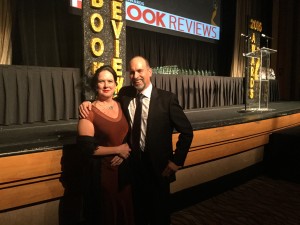 I’m over at Word Whores, sharing a video of my acceptance speech for Best Fantasy Romance of 2015 for THE TALON OF THE HAWK.
I’m over at Word Whores, sharing a video of my acceptance speech for Best Fantasy Romance of 2015 for THE TALON OF THE HAWK.
 Author: Jeffe Kennedy
Author: Jeffe Kennedy
Are Pay-to-Play Published Book Contests Unethical?
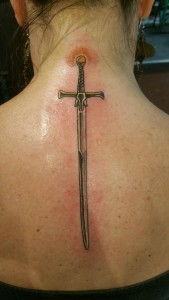 To celebrate that THE TALON OF THE HAWK won Best Fantasy Romance of 2015 from RT Book Reviews, I got this amazing tattoo of Ursula’s sword. I’m thrilled with how it turned out. (Freshly finished and a little red here – it looks even better now!)
To celebrate that THE TALON OF THE HAWK won Best Fantasy Romance of 2015 from RT Book Reviews, I got this amazing tattoo of Ursula’s sword. I’m thrilled with how it turned out. (Freshly finished and a little red here – it looks even better now!)
If you haven’t yet signed up for my newsletter, one went out today with an exclusive, never-seen-elsewhere, juicy deleted scene from TALON. If you sign up today, you can still see it. Yes, I’m totally luring you. Is it working?
You’ll see this in the newsletter (hint, hint) – Kensington is sponsoring a Goodreads Giveaway of 25 copies of THE PAGES OF THE MIND. Hie thee hence to enter!
Finally, I’m over at Word Whores this morning, setting forth the question of whether published books contests that require an entry fee, such as RWA’s RITA Awards, have less integrity than those where books must be nominated, such as SFWA’s Nebula Award.

Hopeful Monsters
Monster
Page One Books
Page One Books
4:00 pm Saturday, July 23 I’ll be signing The Pages of The Mind at Page One Books.
Joining me is Melinda Snodgrass, who’ll be signing The High Ground.
5850 Eubank Blvd
Suite B-41
Albuquerque, NM 87111
Mountain Run Center
Jeffe on the Road!
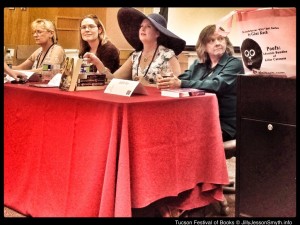 This is a photo from the Tucson Festival of Books panel on Kickass Heroines in Fantasy. With me (from left to right) were Yvonne Navarro, Beth Cato and Judith Tarr. Gini Koch (not pictured) moderated and a fantastic time was had by all!
This is a photo from the Tucson Festival of Books panel on Kickass Heroines in Fantasy. With me (from left to right) were Yvonne Navarro, Beth Cato and Judith Tarr. Gini Koch (not pictured) moderated and a fantastic time was had by all!
But wait, there’s more! There’s awesomeness in the future as well.
For those of you in the Denver area, I’ll be at the Public Library Association (PLA) Conference on Thursday, April 7, at the Colorado Convention Center, 700 14th Street, signing at the RWA booth #1542 at 3:00pm. I’ll be signing my Award Winning (!!) third Twelve Kingdoms book, THE TALON OF THE HAWK. In fact, I have two cases to give away! So, come on by and snag you a copy.
Then on Saturday, April 9, I’ll be at another, much smaller PLA gathering in Gallup, New Mexico, at the Gallup Author’s Festival. The event is at the Octavia Fellin Public Library, 115 West Hill Avenue. (There’s a link here, but it takes some serious drill down. There’s another, shorter blurb here.) I’ll be on the 2:30 – 3:30 pm Books and Culture Panel Discussion in the Main Library Meeting Room and I’ll have many books to give away there, too! So if you’re in the neighborhood, come on by!
That night, Saturday, April 9, the hubs and I will spend the night in Flagstaff, Arizona. Would love to meet up with folks if you’re in that area!
Finally, on Sunday we’ll be moving on to Las Vegas, Nevada, and the RT Booklovers Convention! I’ll be there all week, on various and multiple panels, signings, parties, what have you. If you’re going, you’ll have access to all the agendas. On Friday night, April 15, I get my shiny shiny trophy for THE TALON OF THE HAWK as Best Fantasy Romance of 2015. If you’re NOT registered, you can still come see me at the Giant Book Fair on Saturday, April 16, 10:30 am – 2:00 pm.
Should be big fun! I’ll try to post pics, etc., to Facebook and Twitter, but I’ll likely be scarce here. Have a great week everyone!
Crit Partners vs. Beta Readers
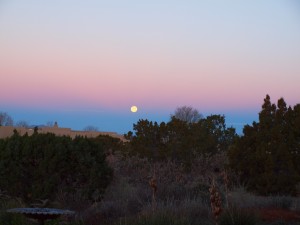 This week’s topic in the Bordello is critique partners (CPs) – why we do or don’t have them.
This week’s topic in the Bordello is critique partners (CPs) – why we do or don’t have them.
It’s surprising to me that, while many aspiring and newbie authors use CPs, it seems like many authors gradually grow away from them over time. Particularly if they are working with editors. Also, more and more these days I hear writers refer to “beta readers” more than CPs, which I think indicates a few trends.
Special Sneak Peek of Harlan!
The publisher of my Twelve Kingdoms and Uncharted Realms books is hosting their annual Ultimate Hero Showdown. Harlan, the hunky and infinitely patient hero of THE TALON OF THE HAWK, has made it through two rounds so far.
(Mostly thank s to passionate fans who stayed up clicking away until midnight!)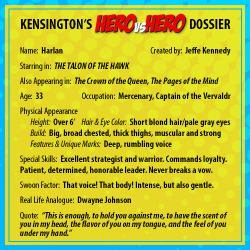
Voting in round three starts at midnight, March 31 and goes until midnight – all U.S. Eastern Daylight Time. You can click as often as you like! (Hence the aforementioned Harlan fans clicking away.)
Harlan also appears in THE PAGES OF THE MIND, out May 31 (finally!). So, to give you a little extra Harlan love, here’s an excerpt from PAGES, which is in Dafne’s point of view. Here he’s helping Ursula teach Dafne self-defense.
Romance Tropes for SFF Writers
 A few weeks ago, in The SFWA Bulletin #207, I talked about Romance Tropes for SFF Writers. I described at length the current top ten most popular romance tropes and how they can be worked into science fiction and fantasy plotlines in ways that will please romance readers. I also offered the One Rule (there must be a happy ever after (HEA) or happy for now (HFN) conclusion to the romance, along with five guidelines for navigating the contract with the romance reader.
A few weeks ago, in The SFWA Bulletin #207, I talked about Romance Tropes for SFF Writers. I described at length the current top ten most popular romance tropes and how they can be worked into science fiction and fantasy plotlines in ways that will please romance readers. I also offered the One Rule (there must be a happy ever after (HEA) or happy for now (HFN) conclusion to the romance, along with five guidelines for navigating the contract with the romance reader.
In a subsequent online conversation, I realized I forgot one – a critical one that comes up in SFF fairly often. So I wrote an addendum, which is up on the SFWA blog. Pop on over to check it out!
On Funerals and Fairy Tales

I’m up in northern Wyoming for a funeral. Always good to see the Big Horn Mountains again, and to spend time with family. The one good part of sad events like these is that family from long distances come together and stories get told that people haven’t heard before. Something about a person’s death unlocks old memories, as if their passing has opened a window into all of their life.
 This week in the Bordello we’re discussing our favorite fairy tales. Come on by and find out about my current obsession.
This week in the Bordello we’re discussing our favorite fairy tales. Come on by and find out about my current obsession.
On Further Serendipitous Hijinks
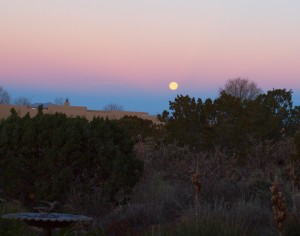 We had fierce dust storms in New Mexico yesterday, which at least makes for amazing sky colors. Here’s the nearly full moon setting at sunrise – still one of my favorite sights.
We had fierce dust storms in New Mexico yesterday, which at least makes for amazing sky colors. Here’s the nearly full moon setting at sunrise – still one of my favorite sights.
So, yesterday I had an interesting moment. Kind of a continuation of this run of serendipity despite sad events. It’s really been a strange few weeks, with many highs and lows.
At this point we’re packing up to make the long road trip for R’s funeral. He was David’s brother, who died much too young from cancer. We’re hoping to drill through a few windows in the winter storms twixt here and there to gather with our extended family on David’s side. One of those people is our daughter, whose birthday was on Monday. A happy note is that we’ll be able to give her birthday presents in person, a rare event these days.
Yesterday, David and I went into town to shop for her gifts. We found the Perfect Thing after several stops. Once we had that, I made an impulsive excursion to buy a vital accessory. I went to my favorite place to buy that accessory – can’t tell you where in case a certain birthday girl reads this – which, like Saturday’s excursion, involved hijinks through different parking lots.
I was standing at the counter, buying my stuff, when out of the sitting area came… guess who? Yeah – Neil Gaiman. He smiled at the counter gal helping me, nodded at us both, saying thank you and good evening.
I managed not to have a fangirl meltdown. But it was close.
And no, I didn’t introduce myself. I chickened out. And besides, that would be *really* stretching my Meet Your Heroes luck!
Still, can you all believe it? My timing is just… I don’t know what to make of it.
Never mind that the counter gal friend of mine tipped me that Neil comes in most days. I may have found my new favorite hangout.
Oh, and Harlan is again up for your voting pleasure in the Ultimate Hero smackdown. You can vote all day, as many times as you feel moved to do so, today – March 23, 2016 – until midnight US Eastern Daylight Time. 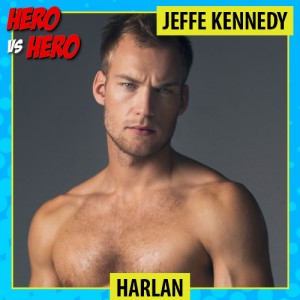
Cheers, everyone!